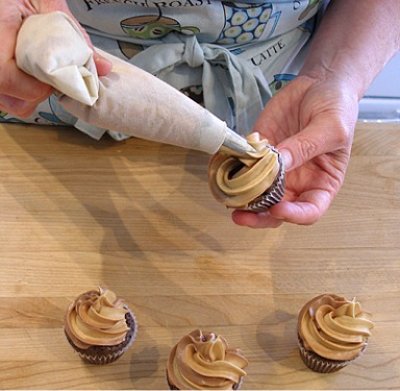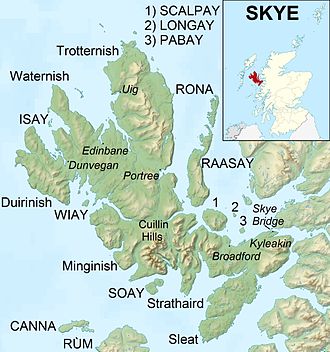The Isle of Skye Part 1
Skye seemed a good a place as any to start - and looked like it would be an amazing place to go visit aside! Peter Martin's book was to cover five stones here, which also makes it tempting due to the amount - hopefully trying to locate five would provide more potential for success than one or two. Below is a screenshot from the contents page of his book, for the stones of the Islands:
As any stone lifter would tell you, Clach is Gaelic of stone, and whatever comes after it is the name of the stone, or sometimes the style of how it was lifted if it was a lifting stone - clach-neart are "putting" stones, stones that were "putt" or thrown over something - however this is debtable due to language uses and it's possible that clach-neart could also have been a generic term for a stone of strength. However one thing that makes finding information on these stones difficult, is that a control-f for stone or clach on anything to do with Scotland, reveals lots of hits... As anyone who has ever been to Scotland would tell you, there are stones everywhere, the country is basically a lump of stone with grass ontop. As such it's not too surprising the part stones have played in Scottish life and community, so many stones are named, from pre-historic standing stones, to so called healing stones, stone circles and may more. Even the word clach can be a nuisance, as the closely spelt word clachan has naught to do with stones and means community or village. Most of what I've learnt about Gaelic language and how it relates to stone lifting and stones comes from Peter Martin's book, so again, go read that if you want to learn more! Ultach is another word you'll see a lot in the above image, and generically means armful/arm length and from what I gather is kind of an indication of size or amount. It's specific to the stones of the Islands, and I don't think there is any mainland stones referred to as Clach Ultach - which would be something akin to a stone that is lifted at arms length or is a large armful.
If it's named "Ultach ...." it no longer has the same meaning, and is instead a weight or burden - so from the above list, "Ultach Gillean a' Bealaich" is the Lift of the Martin's Boys" - the original Of Stones and Strength, the seminal book on stonelifting published in 1996 covered this stone.
Clach Mhor Mhic Criomainn
This was the first stone I tried to locate and learn about, and as it turns out was a pretty decent starting place. I found the below extract in "Place-Names of Skye and Adjacent Islands", by Alexander Robert Forbes in 1923, a Skye native.
So there we start, a location, a name and a translation of the Gaelic name. Boraraig itself is on the opposite coast to Broadford on the above map, and itself is a place with lots of history - a now derelict village since the 1870s, after failed attempts at resettlement, it's death knell sounded with the Highland Clearances in the 1850s, and now all that remains is the ruins of the stone buildings. Peter Martin also wrote about the Bridge of Shaky Knees, as do other sources (including the above, Glagan-glunach), which is also nearby to Boraraig and definitely still exists, a few men had found a suitable stone to act as a bridge for a small stream crossing but couldn't get it into place, until another man also named Peter, Peter Mackinnon helped them lift it into place, and in doing so his knees shook the under tremendous load, so the bridge was named after his feat forever after. Peter Martin in telling the story lists it as 18cwt, which google tells me is 914kg, or a 144 stone. A knee shaking lift indeed, and probably a worthy visit on any stone pilgramage to Skye. At first I was concerned that this was the big stone of Peter MacCrimmon, as certainly the names sound similar and it is also a big stone, yet it seems only one was a piper, and the bridge story dates from early 1700s vs Peter MacCrimmon died in 1879.
EDIT: If I had read the above excerpt in it's entirity I would have noticed that it mentions that Captain MacCrimmon "flourished", Peter of the Shaky Knees - which I would take to mean was either his son or descendant at the least! So there was no chance of the two stones being the same.
 |
| The Bridge of Glagan-Glùine, or "Shaky Knees" |
Any further search of a stone at Boraraig reaveled nothing, so I took a different tack and steered towards Captain MacCrimmon. The MacCrimmon's ran a famous piping college at Boraraig, where pipers would go to learn, and the college provided pipers to the reigning MacLeods at Dunvegan Castle, Skye. This was an arrangement in place for apparently over three hundred years.
 |
| Not that kind of piping, the Scottish kind. |
 |
| The stone with a man of scale - certainly looks large! |
So there we go, a location, it's history and a photo to aid in identification. An aside note is that Peter Martin mentioned this stone in a section on "assisted lifting", a style of lifting whereby due to their immense size, stones were somehow lifted and moved perhaps using the Highlander's plaid as some sort of harness. It certainly looks far larger and therefore far heavier than the average lifting stone people visit these days.



Comments
Post a Comment